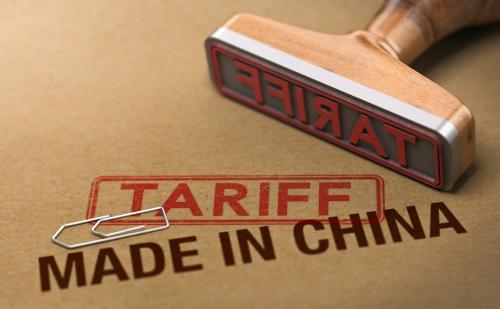On June 4, 2024, Joshua P. Meltzer testified before the Standing Committee on International Trade of the Canadian House of Commons regarding the 2026 CUSMA Review. The following written testimony represents his personal views and does not reflect the views of Brookings, its other scholars, employees, officers and/or trustees.
It is my pleasure to be here today before the House of Commons’ Standing Committee on International Trade to testify to you on the Canada-United States-Mexico Agreement (CUSMA) and its joint review in 2026.
I am a senior fellow at the Brookings Institution where I lead the USMCA initiative. The
USMCA initiative was established shortly after the overwhelming bipartisan support for the agreement in Congress. We saw an opportunity in this vote and its support by key U.S. labor unions to reset the conversation around North American economic integration. We have done this by providing the data and analysis to inform policymakers and stakeholders about the importance of CUSMA for each country and to outline a vision and pathway for how CUSMA can build an even more competitive, inclusive, and sustainable economic relationship.
For instance, we have a CUSMA Tracker that provides data on all trade and investment flows as well as jobs created by this trade. Over 17 million jobs are supported by exports across North America.
We also track compliance by all parties with their CUSMA obligations and have a CUSMA Scorecard that scores compliance by each government. It is my pleasure to report to you that the Canadian government is the least noncompliant party to CUSMA.
We also produce reports and analysis, including our annual USMCA Forward report, which assesses progress each year in the economic relationship and looks forward to what more can be done.
We have had the honor of contributions to these reports from a number of Canadian ministers, including Minister Ng, Minister Champaign, and Minister Wilkinson, in addition to business leaders such as Paul Desmarais Jr., CEO of Power Corporation; Goldy Hyder, president of the Canadian Business Council; and other Canadian thought leaders from civil society and academia.
This is clearly a pivotal time for the U.S. and the world when it comes to international trade. The current system of world trade based in the World Trade Organization is being challenged by geopolitical competition, heightened risks from dependence on trade with countries such as China, and unfair competition.
North American trade and investment ties have always been critical for the prosperity of Canada, the U.S., and Mexico. CUSMA is the agreement around which this economic cooperation is based. More than a traditional trade agreement, it is a blueprint to realize the potential of an integrated, competitive North American region, and since it was signed three and half years ago, it has contributed to boost trade and investment across the region, creating thousands of jobs, and raising labor standards.
I know this is not news to you, but it’s worth stating for the record that CUSMA is the most important trade agreement for all three countries.
- Around 78% of Canada’s exports go to its North American partners, and over 85% of Mexico’s exports go to its North American partners.
- Over 30% of U.S. exports go to Mexico and Canada—this is over four times its exports to China.
- A lot of this is intermediate goods crossing back and forth to make complex goods like cars, medical equipment, and IT products.
- In 2023, trade in North America was about $1.85 trillion—about $3 million per minute.
- There has been a 47% increase in North American trade since 2020 when CUSMA came into effect.
- Since 2020, there are an additional 4 million new jobs supported by trade in North America.
- As noted, North American trade now supports 17 million jobs.
The economic importance of CUSMA is clear.
Turning to the geopolitical importance of CUSMA
The last few years have shown us some of the risks but also the resiliency of supply chains across North America.
COVID-19 showed the risks of relying on China for medical equipment compared with the strong performance of North American supply chains in delivering medical equipment and more.
Russia’s invasion of Ukraine has impacted trade in agricultural commodities and demonstrated the global trade impacts of even localized conflict.
Trade relations are also being fundamentally rethought in light of geopolitical competition with China. This is due to a number of challenges, including the need to respond to China’s economic model that provides enormous subsidies to manufacturing, which leads to an oversupply of products—increasingly in higher technology areas such as EVs (electric vehicles).
And with low levels of domestic demand in China, the result of this economic model is increasing reliance by China on exports to North America and Europe in particular to absorb this excess production.
And China has also demonstrated that where countries rely on it as a key source of supply or as a market for its exports, China will use this leverage to coerce cooperation to achieve other political objectives.
The U.S. talks about de-risking trade with China by creating alternative sources of supply, particularly products that are critical for economic and national security.
To de-risk will require even closer North American cooperation, more trade and investment, and a bigger vision for what we can achieve together whether on climate, digital, labor, worker training, and more.
This is where CUSMA is so important both economically and as a geostrategic opportunity.
The agreement’s zero tariffs and binding legal commitments reduce the cost and risk of cross-border trade and investment.
The agreement’s rules on the environment, digital trade, SMEs (small and medium-sized enterprises), intellectual property, services, and more, also enable trade and investment.
Let me now turn to the CUSMA joint review in 2026
By July 2026, the parties are to confirm their ongoing support for CUSMA at a “joint review” by the Free Trade Commission, which comprises minister-level government representatives from each party. The first joint review is to take place on the sixth anniversary of entry into force of CUSMA—which will be on July 1, 2026. At the joint review, the commission will review the operation of CUSMA. The commission can also “review any recommendations for action submitted by a Party.”
Should the parties confirm in writing that they want to continue with CUSMA, then the agreement will be extended for another 16 years. If the parties do not extend the agreement at the first joint review in 2026, then the commission is to conduct a joint review each year for the remainder of the term of the agreement (i.e., until 2036). During these subsequent joint reviews, the parties can confirm in writing their wish to extend the agreement for another 16 years. Failure to extend the agreement during the first or subsequent joint reviews will lead to CUSMA termination on July 1, 2036.
Even should CUSMA be eventually renewed, failure to renew CUSMA in 2026 would increase business uncertainty, increasing risk and costs of the investment and trade needed to achieve the economic and geostrategic goals outlined above.
Between now and 2026 there will be elections in the U.S. and Canada.
The outcomes of the U.S. presidential elections are perhaps most important in determining whether there will be a successful renewal in 2026.
What is clear is that whoever is in the White House, the need to renew CUSMA will be used to push for resolution of specific trade barriers.
The joint review provides an opportunity to develop a forward-looking agenda on what the three countries can do to strengthen North American competitiveness, build more secure and resilient supply chains, make progress on building a more digitally aligned North American market, and further develop North America as a source of investment stability and strength when it comes to geostrategic competition with China.
To achieve this will require addressing outstanding trade irritants, where possible, before the joint review. Bringing outstanding issues arising from past CUSMA disputes into the joint review would risk missing this opportunity to use the joint review to build a forward agenda, and would increase the risk that CUSMA is not renewed in 2026.
I look forward to answering any questions you may have.




Commentary
Testimony2026 CUSMA Review
June 4, 2024